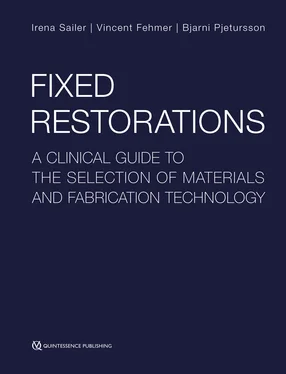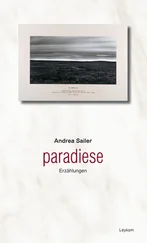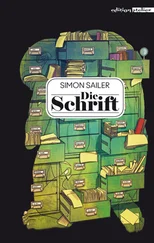In patient situations with high smile line and exposure of the posterior maxillary teeth, facial microveneering may be needed for good esthetic integration.
In anterior regions, the current monolithic ceramics do not allow for perfect esthetic outcomes, not even when multilayer materials are used. The facial application of veneering ceramics (microveneering) and stains is, hence, needed for good esthetic results including a cut-back design of the monolithic restoration (Fig 1-3-7).
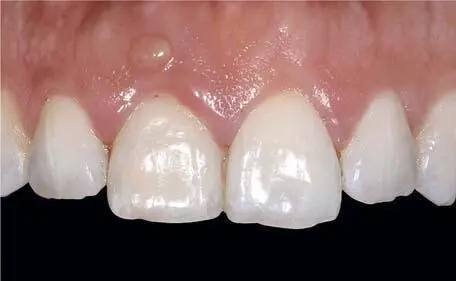
Fig 1-3-7a Buccal view of the initial situation of a non-preservable central incisor (tooth 11) due to a fracture.
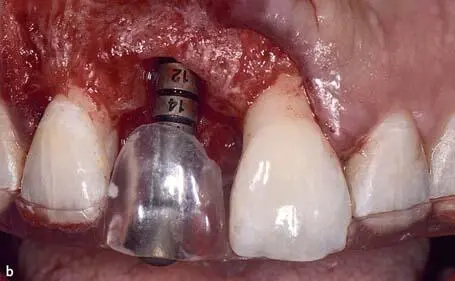
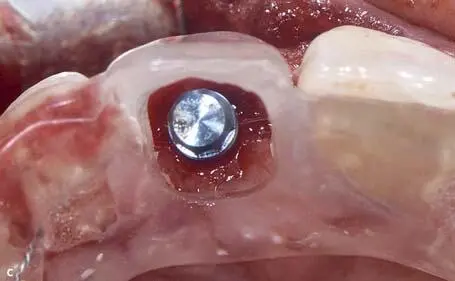
Figs 1-3-7b and 1-3-7c Buccal and occlusal views during implant placement of a regular diameter bone level implant (BLT 4.1 mm, Straumann) guided by a conventional surgical guide.
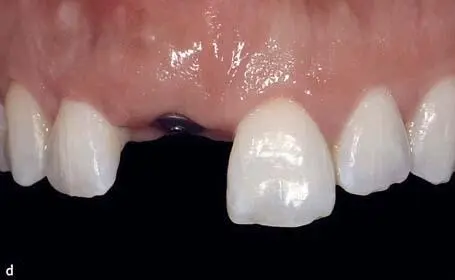
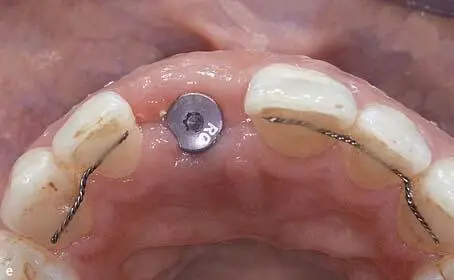
Figs 1-3-7d and 1-3-7e Buccal and occlusal view before final impression.
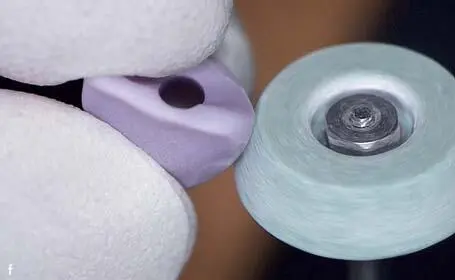
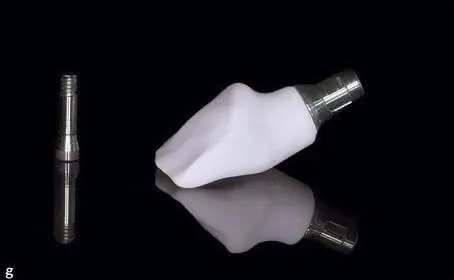
Figs 1-3-7f and 1-3-7g Adjustment of the connector in the blue pre-sintered phase.
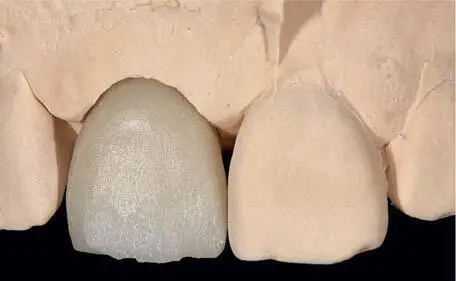
Fig 1-3-7h Sintered lithium-disilicate crown on the master model before buccal microveneering.

Fig 1-3-7i Application of about 0.4 mm of dentin in the cervical area (Power Dentin A2, IPS e.max Ceram, Ivoclar Vivadent).
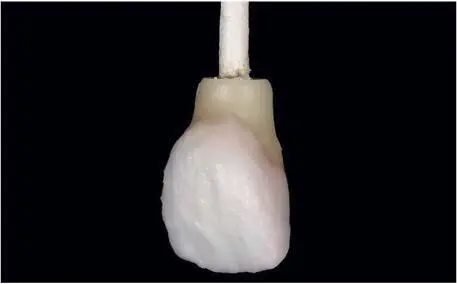
Fig 1-3-7j After finalization of the microveneering by the application of Enamal (IPS e.max Ceram, Power Incisal, Ivoclar Vivadent).
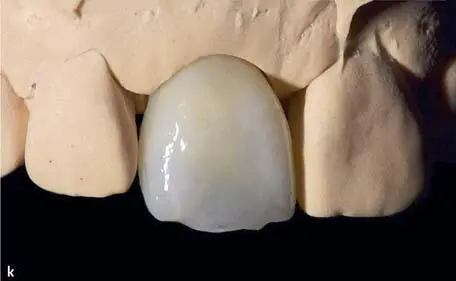
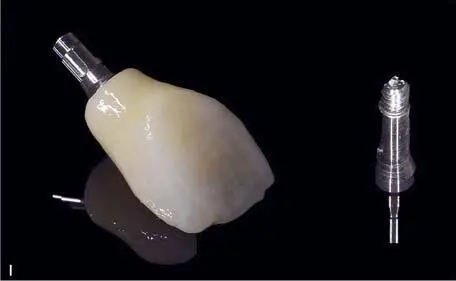
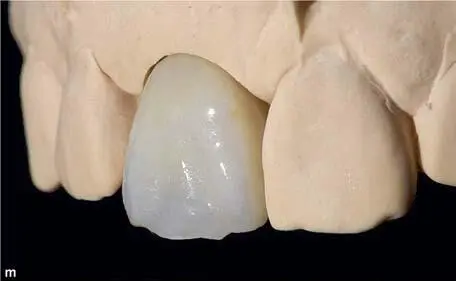

Fig 1-3-7k to 1-3-7n Final view of the microveneered lithium-disilicate restoration cemented to the titanium-base abutment with Multilink Hybrid Abutment HO-0 (Ivoclar Vivadent).
Material-specific limitations
Technicians and clinicians need to be aware of the material-specific strength and indications of the materials indicated for monolithic application. Hybrid materials like, for example, the polymer-infiltrated ceramic network (PICN) (Vita Enamic, Vita Zahnfabrik, Bad Säckingen, Germany), lithiumdisilicate glass-ceramic, and highly translucent zirconia exhibit strength values ranging from 250 up to 800 MPa (see Part I, Chapter 1). Compared to this, the yttria-stabilized zirconia polycrystals, used for framework fabrication, exhibit strength values of approximately 1500 MPa. Due to this reduced material stability, the indication of the latter materials is limited to single-unit application (Fig 1-3-8).
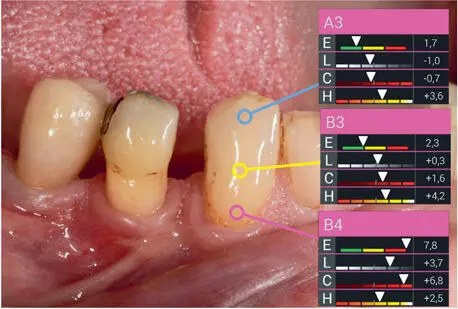
Fig 1-3-8a Initial situation of a missing first molar and the application of a spectrophotometer (Vita Easyshade, Vita Zahnfabrik) to transfer the reference tooth shade.
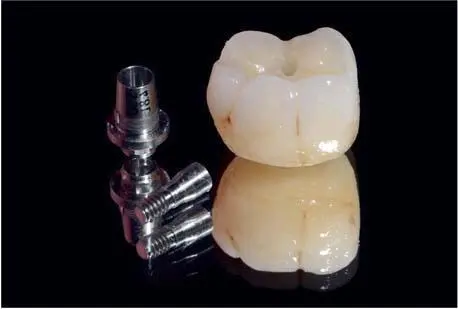
Fig 1-3-8b Final individualized monolithic PICN (Vita Enamic, Vita Zahnfabrik) restoration before cementation to the titanium-base abutment.
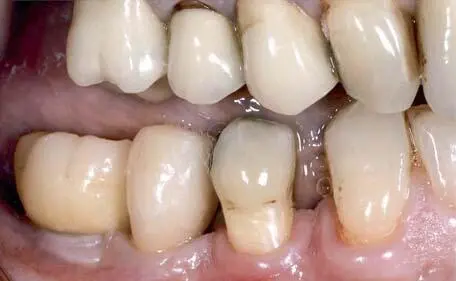
Fig 1-3-8c Final buccal view of the directly screw-retained, monolithic PICN restoration on a titanium-base abutment (Vario-Base for Cerec, Straumann).
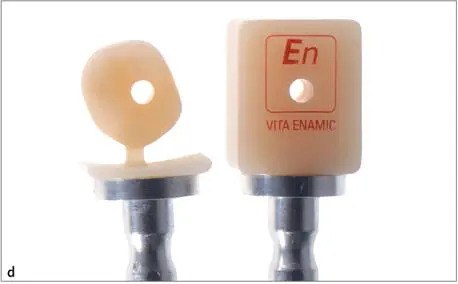
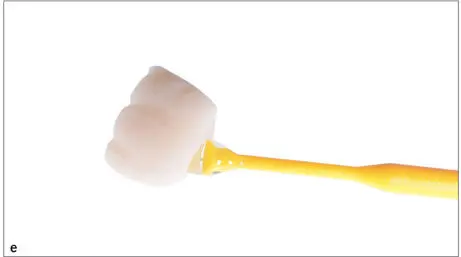
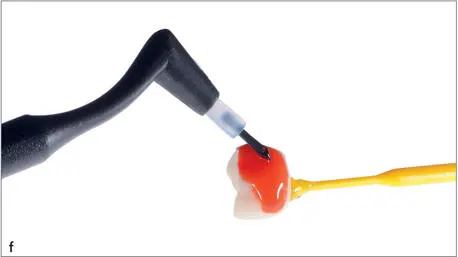
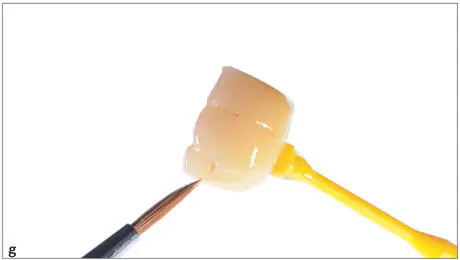
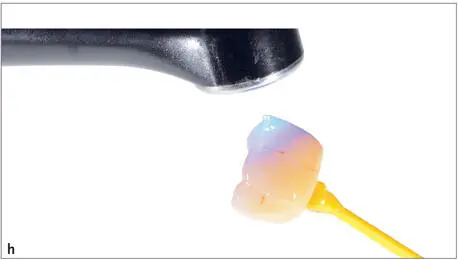
Figs 1-3-8d to 1-3-8h Superficial individualization of the monolithic PICN restoration by the application of light-curing stain and glaze (Vita Enamic Stains, Vita Zahnfabrik).
Some manufacturers of translucent zirconia allow its use for short-span fixed dental prostheses with one pontic. In this case, the minimum dimensions of the cross-sections, as recommended by the respective manufacturer, need to be applied for sufficient clinical stability (Fig 1-3-9).
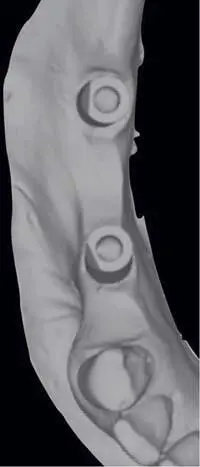
Fig 1-3-9a Initial situation after optical impression using intraoral camera (Trios3, 3Shape) for the fabrication of a four-unit monolithic zirconium oxide fixed dental prostheses (FDP) with mesial cantilever.
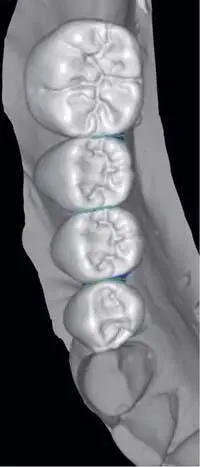
Fig 1-3-9b Digital design of the four-unit FDP using a CAD software (Exocad).
Читать дальше
